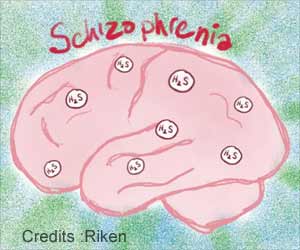
‘MicroRNAs Dgcr8–miR-382-3p and miR-674-3p–Drd1 mechanism contribute to the deceleration of ciliary motility and age-dependent ventricular enlargement.
’
Read More..Tweet it Now
The deletion of a region on chromosome 22 (22q11.2-deletion syndrome) increases the risk of developing schizophrenia approximately 30-fold in humans. The 22q11-deletion syndrome can be replicated in mice, creating a research model with scientific significance for studying schizophrenia. Researchers have previously observed ventricular enlargement in individuals with the 22q11-deletion syndrome and in mouse models.Read More..
The researchers wanted to find out what drives ventricular enlargement in models of the 22q11-deletion syndrome. They were interested in the motile cilia, structures that line the ventricle walls and help cerebral spinal fluid circulate.
"Schizophrenia itself is polygenic; there is no single gene that can explain all of the symptoms of this complex disease," said senior author Stanislav Zakharenko, M.D., Ph.D., of the St. Jude Department of Developmental Neurobiology. "But the 22q11-deletion syndrome model gives us an opportunity to identify the gene that contributes to ventricular enlargement."
The gene Dgcr8 is found within the region of DNA that is missing in 22q11-deletion syndrome. This gene plays a role in synthesizing microRNAs. The team found that the deletion of Dgcr8 reduces the microRNAs miR-382-3p and miR-674-3p. When those microRNAs are reduced, a receptor on the surface of motile cilia lining the ventricle walls called Drd1 is increased.
Results show that when this mechanism is active, two changes occur in the ventricles: The motile cilia move more slowly, and the brain ventricles are enlarged.
Advertisement
"In our model, we were able to remove the microRNAs and get this effect, and we were able to reintroduce these microRNAs and see that the ventricles and cilia return to normal."
Advertisement















